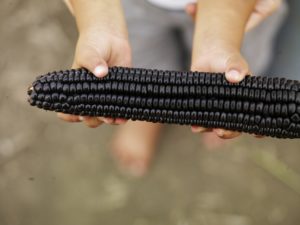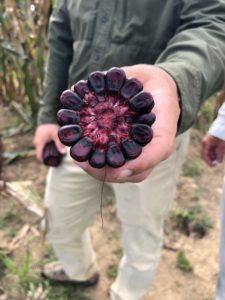The cost of natural colors varies, especially when compared to synthetics. Caramel colors, for example, are on the low end of the spectrum because they are made from raw materials (corn, wheat, sugar cane) that can be grown on a large scale, while spirulina is typically a high-cost color because it is grown in highly controlled environments and extracted using specialized processing equipment.
Other factors that influence the cost of natural colors include country of origin, agricultural variables, quality and other certifications, contracting ahead, and the need for special packaging. Even different forms of the same natural color can have different costs depending on how it’s made and where it’s made and how its packaged – making it impossible to provide a precise number.
Even though it isn’t possible to provide an exact number for any one color, we’ll talk about the main factors that influence the price of a natural color.
Country of Origin
Natural colors are grown all over the world and the cost of labor is different in each region. While lower labor costs may offer a cost advantage for your product, the standards employed may not meet certain sustainability or best practice requirements. So, you may opt to source from a more expensive region that has guarantees of fair trade and labor.
Geographical proximity of the raw material to the manufacturing site is another cost factor. If the distance between where a raw material is grown is far from where the color is extracted/manufactured, expect a significant increase in cost on to cover transportation costs, especially if it requires refrigerated or frozen shipping.
Certifications / certificates
Organic, Kosher, Halal, and Non-GM are all great certifications for products to have. But they require extra costs related to manufacturing practices and certifications by organizations to ensure that the products meet certain requirements.
Agricultural Variables
Weather
Just like other agricultural products, the price of produce grown for natural colors is subject to the weather – creating abundant yields or measly harvests. Rain can be beneficial to crop size and quality, increasing yields and lowering the cost. But too much rain can flood fields and damage plants, increasing the price.
Drought can also affect the yield, but almost always negatively. Even short-term drought during the key stages of growing can stunt growth and result in poor size and quality of produce. When this happens, the price of the natural color will increase because it will almost certainly lead to a shortage.
Similarly, climate change is affecting crops all around the world. While some plants may benefit from warmer weather or more carbon dioxide, most crop growing regions will struggle with consistently warmer weather, longer more frequent droughts, and an increase in severe weather.
Pests and disease
Insects and wildlife, such as rats, mice, and birds can all threaten the health of growing crops. Insects can damage the leaves, roots, and stems of growing plants, affecting their ability to produce fruits and vegetable. The elderberry crop in 2020 is a prime example of this – the crops were completely devasted by a type of fruit fly.
Wildlife can damage fruits or vegetables before and even after harvest in barns or storage containers. The most affected crops are wheat and corn, the main sources used to produce caramel colors and burnt sugars.
Bacterial, fungal, and viral infections can also cause significant damage to crops. The symptoms of disease, such as leaf wilt or damage, lesions, and spots, can negatively impact a plant’s ability to grow and produce healthy fruit/vegetables and requiring measures to prevent the spread – all of which increase the cost of the raw materials.
Ability to Contract
Because the biggest factor in the cost of natural colors is related to growing crops, a little planning goes a long way. If you are able/willing to contract for your annual needs, this gives the supplier time to source and produce to scale in the most economical way – and pass the savings on to you in the process.
Order/Pack Sizes
Order size can also help reduce cost. Larger orders allow for overhead costs related to production to be spread over more material, resulting in a lower cost per pound. Smaller orders, on the other hand require the same production cost to run the machines, but because there is less material, the cost per pound will be higher. It’s usually more expensive to “spot buy”-if not in price, in quality.
Pack size and type can also make a difference in your final costs. It requires longer equipment runs and more labor to fill 4–gallon jugs than a single large tote, for example. And specialized films and wraps add additional labor and material costs to order.
Despite all the influences on the cost of a natural color, your supplier should be able to work with you to navigate different options to get the best order size and packaging to fit your budget. Contact us to get started.


